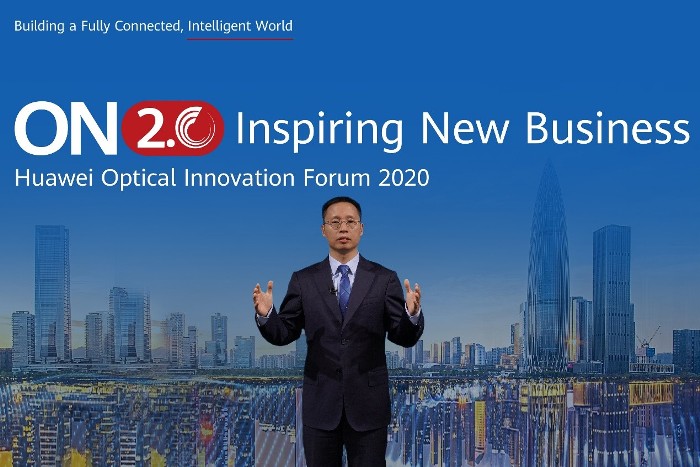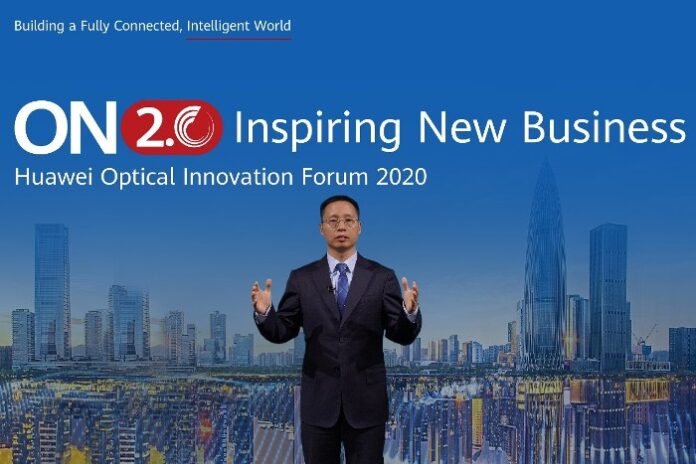
Huawei announced it will further upgrade its Optical Networking 2.0 (ON2.0) solution at Huawei’s 7th Optical Network Innovation Forum, which featuring new speed, new sites, new smart O&M, new schema and new services. This solution will help operators develop innovative services and thrive.
The global pandemic has seen home networks undergo a radical transformation, from serving as a source of entertainment to being a means of working and learning from home. It consequently places higher requirements for user experience. Along with this, enterprise digitalization has also led to a pressing need for a deterministic experience. Optical networks are key to guaranteeing optimal and assured user experience. In 2019, Huawei released the 5G-oriented ON2.0 solution that features three new technologies: new speed, new sites, and new smart O&M, which aim to build an experience-centric service transmission network. In 2020, Huawei upgraded its ON2.0 solution to promote the evolution of the all-optical network industry and help operators build all-optical metro architectures that provide a superior service experience.
New speed: By maximizing fiber capacity, an optimal cost per bit can be achieved. Huawei’s 800G optical module supports an adjustable line rate ranging from 200 to 800 Gbit/s and 20% longer transmission distance using a unique Channel Matched Shaping (CMS) algorithm. The Super C-Band solution provides up to 120 channels and supports smooth evolution to Super C+L. As a result, Huawei has helped global operators build over 120 200G commercial networks.
New sites: Sites are simplified to reduce TCO. On the electrical layer, Huawei’s Liquid OTN solution reduces per-site latency by 70% and supports 100-fold more connections by breaking bandwidth into 2M hard slices. On the optical layer, Huawei’s new compact OXC product OSN 9800 P32C is flexible enough to fit various scenarios. It also slashes physical footprint by 90% and power consumption by 60%, eliminating the need for internal fiber connection. Currently, around 1000, OXC products have been deployed across more than 60 global commercial networks.
New smart O&M: An all-optical autonomous driving network that utilizes Huawei’s iMaster NCE for simplified O&M, while the ASON2.0 solution ensures always-on services with 99.999% network availability. Huawei’s iMaster NCE has so far been deployed in 130 optical networks by leading operators in Italy, the Netherlands, Saudi Arabia, Thailand, Singapore, Indonesia, the Philippines, and South Korea.
New schema: Optical networks are extended to the edge to build a stable all-optical metro architecture. The key is extending OTN to CO and subCO to achieve one-hop to the cloud, guarantees bandwidth, lower latency and higher availability, connecting homes, companies, mobile users and campuses directly. All-optical metro will build a solid foundation for more premium services.
New services: Premium service experience can be enabled by high-quality optical connections. The OTN premium private line solution offers differentiated SLA services and features bandwidth-on-demand, low latency, short time to market, and high availability. Until now, more than 70 optical networks for private line services have been built worldwide. Meanwhile, Huawei also debuted the OTN premium home broadband solution to bring an enterprise-class premium experience to home users. This solution provides a deterministic home service experience through an all-optical gold pipe in addition to increasing the ARPU of home users.
“Optical networks should play an important role in 5G, home broadband, private line and cloud. An end-to-end target network for all-optical cities is the foundation for providing all premium services, so let’s work together to embrace the next gold decade of optical network industry,” said Richard Jin, President of Huawei’s Transmission and Access Network Product Line.








